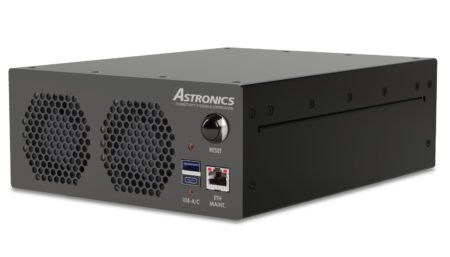Inmarsat has announced a new range of service plans for its Jet ConneX (JX) inflight broadband solution for the business aviation market.
Launched as part of Inmarsat’s JX Evolution programme, these latest service plans are available for new and existing customers to order now. Inmarsat said they mark a step-change in performance that is backed by guaranteed speeds and its consistent customer experience.
The new service plans use Jet ConneX’s existing JetWave terminal by Inmarsat’s partner Honeywell, and will also be compatible with three upcoming next-generation terminals being developed by Satcom Direct, Orbit and Honeywell. Satcom Direct’s Plane Simple Ka-band system has commenced flight testing and is expected to enter service later this year.
All three next-generation terminals are designed for optimised performance, reduced costs and simplified installation and maintenance, with reduced size and weight to make them suitable for various types of business jets.
Jet ConneX customers will also benefit from seven more Inmarsat satellite payloads entering service by 2025, increasing its Ka-band network fleet to 12. This includes two Inmarsat-6s, both of which have already launched, followed by two payloads in highly elliptical orbit, enabling commercial mobile broadband service for flights in higher latitudes and across the Arctic. Three additional satellites will then launch in geostationary orbit, adding further speed, capacity and resilience.
Inmarsat said the combination of next-generation terminals and its fast-growing satellite network will enable speeds up to 100Mbps, for top-tier customers that demand the highest level ‘office-in-the-sky’ experience.
The new Jet ConneX service plans are available through Inmarsat’s global business aviation distribution network, which consists of Satcom Direct, Collins Aerospace and Honeywell.
“Jet ConneX is renowned for delivering a very high standard of service and these transformative new plans once again highlight Inmarsat’s continued focus on staying ahead of market expectations,” said Kai Tang, Inmarsat’s head of business aviation. “This provides customers with reassurance that our connectivity will keep pace with their long-term needs. Importantly, as these include the first plans to use our new satellites and terminals, it also offers a glimpse into future capabilities and provides certainty that their investment in our technology is future-proofed.”
“These service plans have been specifically designed to deliver even greater value and performance based on unique insights into usage of our inflight broadband service,” continued Tang. “This build-up approach is unique to Inmarsat and cannot be replicated by others in the market, some of which have a tendency to over promise and under deliver, either from the start or as their networks fill and performance degrades.”
“Crucially, this is only the next step for us,” said Tang. “We will continue to assess usage and adapt accordingly, with even more flexible options to be announced later this year.”
Since entering commercial service in November 2016, Jet ConneX has been activated on more than 1,400 business jets. Passengers use everything from video streaming and live TV to conference calls and other business activities. Inmarsat said JX’s most powerful service plans will enable passengers to simultaneously connect more devices and enjoy unchallenged access to the most data-hungry applications – including high-definition video conferencing – without compromising on consistency, reliability, resilience and seamless global availability.





